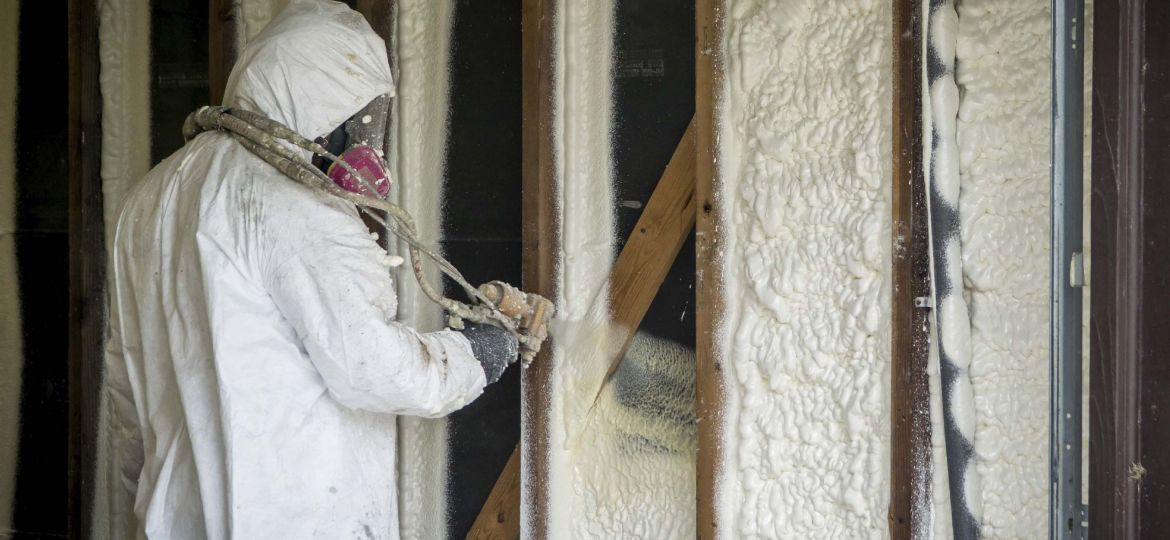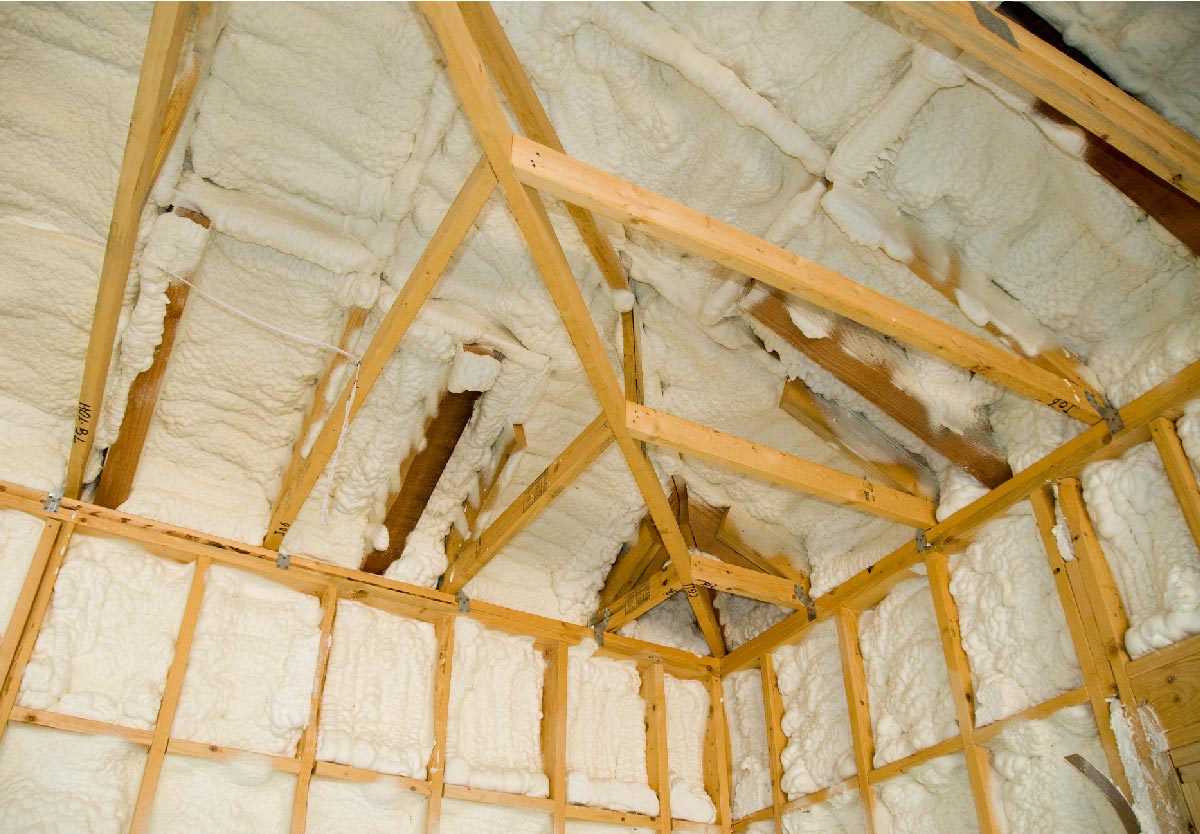
The Dangers of
spray polyurethane foam
Spray polyurethane foam (SPF) insulation has become increasingly popular in both residential and commercial applications in an effort to reduce heating costs and decrease consumption of fossil fuels. Not only is SPF said to be more energy efficient than traditional fiberglass insulation, it is typically cheaper to purchase and install. Most SPF manufacturers claim that their product is “environmentally friendly” or “green”; however, there are no regulatory authorities that have evaluated and substantiated these claims.
The Basics
When professional applicators follow appropriate safety measures, the potential hazards associated with SPF chemicals can be effectively managed. However, if risks are improperly managed, workers and building occupants could be exposed to potential hazards present in aerosol mists and vapors. In addition to the release of airborne SPF chemicals during spray application, certain components may emit from newly installed SPF insulation products for a period of time following installation.
Applying spray polyurethane foam
Improper installation is often the cause for symptomatic reactions to SPF although some people have had adverse reactions with very limited exposure to the chemicals commonly found in SPF. Manufacturers assert that the chemicals used in spray foam are supposed to lose toxicity once it is sprayed inside homes, but other research indicates that the foam releases formaldehyde gas and other toxic substances even after it is installed.
Workman’s comp claims have also been on the rise from spray foam installers who have become ill as a result of repeated exposure to the chemicals in the foam. William Swietlik, co-chair of the EPA’s workshop on spray foam dangers, has asserted that the chemicals used in the insulation are “a leading cause of workplace asthma and are a well-known sensitizing toxicant to humans.”
The bottom line: be sure to research your installer, their safety protocols, and reviews. SPF has been effective for reducing heating and cooling costs; however the risks with improper installation and exposure to the compounds at any time during the process may outweigh the benefits.
Curing
“Curing” of SPF means that the chemicals in the product are reacting to produce polyurethane foam. SPF material is highly adhesive and will stick to most surfaces. SPF may appear hardened or “tack-free” within a range of a few seconds to a few minutes after application. However, at this stage, the foam is still curing and still contains unreacted SPF chemicals.
Some manufacturers recommend 24 hours after application for the two-component high pressure “professional” SPF system for worker re-entry without the use of PPE and for re-occupancy by residents and other building occupants, but the recommended time may vary.
Contact your manufacturer or supplier for specific guidance on ventilation time, re-entry time, and re-occupancy time for your specific product and scenario.
- air barrier
- attics
- exterior subgrade
- perimeter walls
- interior Insulation

- wheezing
- shortness of breath
- coughing
- irritation of the eyes and lungs
- fever
- stuffy nose
- sore throat
- tightness in the chest
- headaches
- joint pain
Off-Gassing
The potential for off-gassing of volatile chemicals from spray polyurethane foam is not fully understood and is an area where more research is needed. Standardized methods are needed to assess the potential impacts of SPF insulation products on indoor air quality and to establish re-entry or re-occupancy times after product installation in a building and to better understand post-occupancy ventilation needs, such as through HVAC considerations during the planning phases before SPF or other insulation is installed. Remember, insulation is intended to seal a residence and can significantly decrease air exchanges, emissions from SPF and other products, including combustion sources, can build up in a building.

